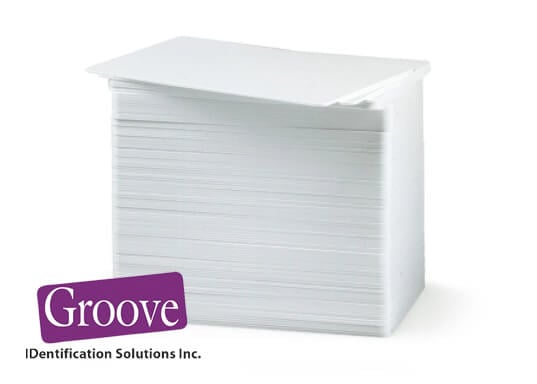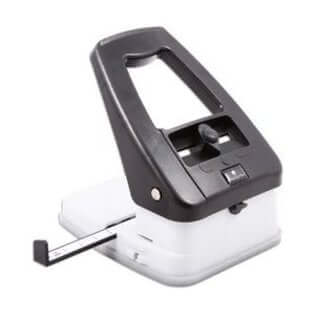Are Composite ID Cards Better than PVC Cards?
The choice between composite and PVC ID cards isn’t always straightforward. Find out the benefits of each type of card material and some of the considerations that should drive your procurement decision.
When customers browse the ID Cards tab on our Groove website, they’re often taken aback by the variety of choices available. There are plain white and coloured cards, proximity and magstripe cards and one option that many customers find a bit tricky is whether to choose PVC or Composite card stock.
To simplify the decision, it helps to know how the factories make each card type. PVC stands for a synthetic thermoplastic called polyvinyl chloride. The composition of this type of ID card is 100% PVC.

Composite ID Cards Contain a Blend of Materials
As their name implies, composite ID cards contain a blend of materials. Typically, a composite card uses 70% PVC and 30% polyester. This combination of raw materials produces a more stable and durable card stock.
The difference in raw materials matters to you and your facility because your card stock choice dictates how long your cards will last and how your staff can use them. A lot of this has to do with the kind of card printer you use.
If you use a direct-to-card printer, you have the option of using either type of card. Either material will support the text and images your printer applies to it.
And yet, it still might be penny wise and pound foolish to use PVC cards with your direct-to-card printer. Composite cards are more durable than PVC cards. A well-made composite card can usually last about ten years.
So, suppose you’re supporting a facility that expects to have many long-term
cardholders. In that case, it may be wiser to invest in composite cards. If you go with PVC cards and your cardholders swipe and handle them daily, you may only get a couple of years out of each one.

At the same time, there’s an advantage to PVC cards. They come in a wide variety of attractive colours. The colour range available with composite cards is more limited than PVC. Colour selection is another reason to check with your communications team and discuss how the card design should align with your firm’s visual identity.
We’ve found that most of our customers choose composite stock because they work with a retransfer printer. This type of card printer applies the ink to transparent film and then uses heat to bond the film onto the card stock.
The heat can take its toll on some PVC cards, and sometimes they bend or warp. Composite cards are more stable under heat, so using them with your retransfer printer can cut down on waste. Similarly, if you’re planning to laminate your ID cards, composite cards are more heat resistant in that process as well.
Composite Cards are More Heat Resistant
Heat resistance can be helpful because lamination is by far the best way to ensure that your cards will last. Another simple way to improve your ID cards’ longevity is to choose thicker card stock.
In the end, the best choice for every site is different. If you’re using a direct-to-card printer to produce simple membership cards that get replaced every year, then lower-cost PVC cards may meet your needs. You can even get a little more creative with your background colour.
Some sites aim to use a retransfer printer to generate top quality, laminated employee ID cards that will stand the wear and tear. Cards that contain a composite material will serve them better. Our customers who go this route look at the premium price as short term pain for long term gain.
As always, our support team would be pleased to guide you through these options. We can work with you to determine the optimal card stock to meet your long-term needs. We’re happy to review your options and explain why some cards go best with your card printer model while others...not so much.
Maybe you’ve already settled on your preferred type of card stock. If so, we’d love to hear about your experience with card durability or answer any questions you may have.
Please share your thoughts with us! 1-888-940-3645




